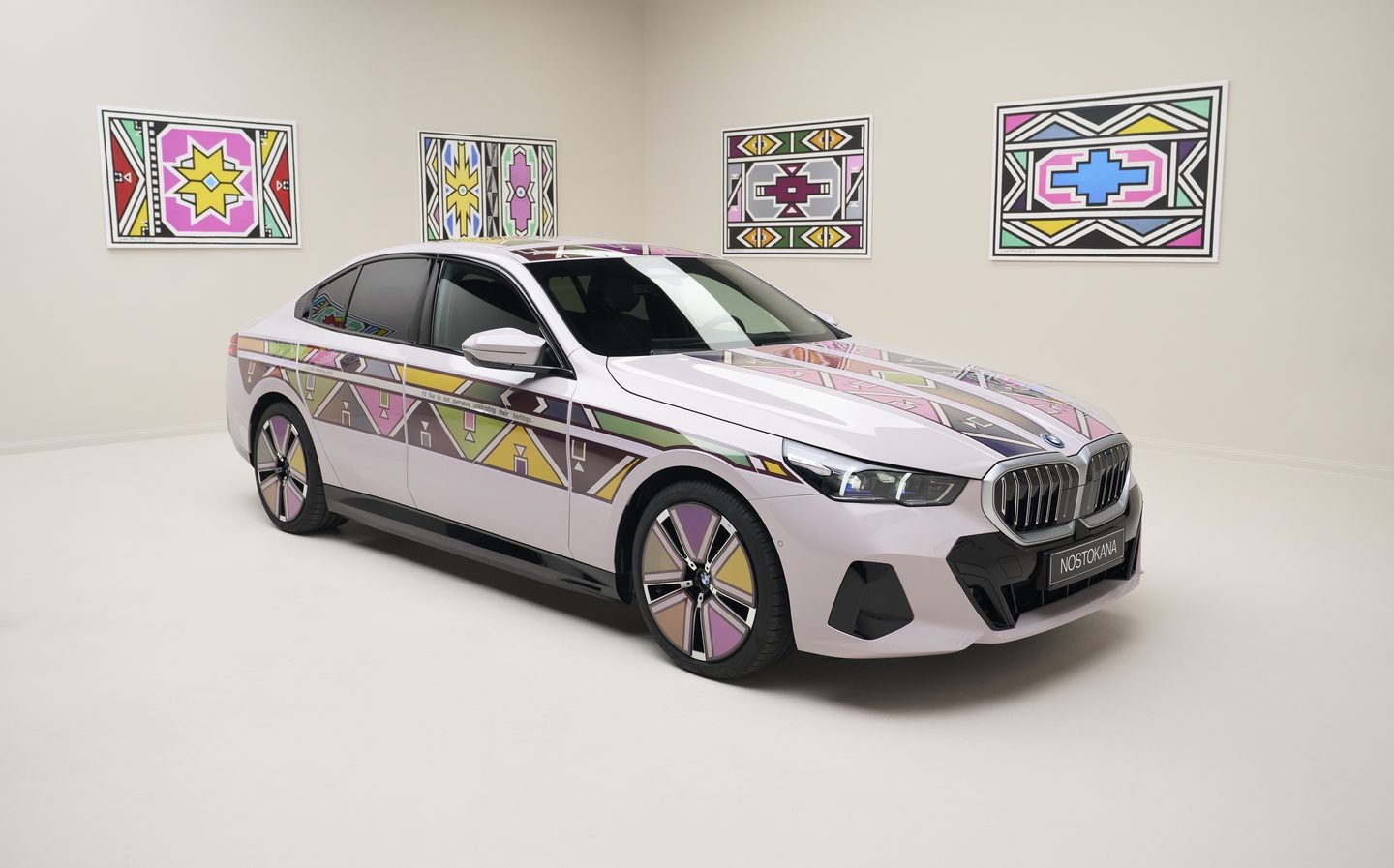BMW art car has colour-changing electronic bodywork panels
Change your car's colour as easily as the ambient lighting? Yes please...
BMW has revealed a new art car based on the i5 pure-electric saloon, with colour-changing bodywork technology.
The BMW i5 Flow Nostokana was designed by South African artist Esther Mahlangu. It’s the second time 88-year-old Mahlangu has designed a BMW art car, having used a 525i as the canvas for one of her works in 1991.
Famous for her geometric Ndebele designs, Mahlangu named the i5 after her son, and created the shifting design using BMW colour-changing technology that was first highlighted at the 2022 Consumer Electronics Show (CES) on the iX Flow concept.


Employing e-reader tech
BMW’s Flow technology uses sections of film that can be electronically animated, with the structure and arrangement of the colour particles changed by applying an electric voltage, thereby changing the appearance. It’s much the same technology used in e-readers.
The iX Flow offered the ability to change from white to black at the push of a button, while the 2023 BMW i Vision Dee concept car had 240 sections of film applied, enabling the car to display up to 32 colours.
In the case of the i5 Flow Nostokana, there are strips of film across the bonnet, roof and rear, as well as film on the sides and wheels. In total, 1,349 sections of film have been applied, each of which can be individually controlled to create the Ndebele art for which Mahlangu is famous.
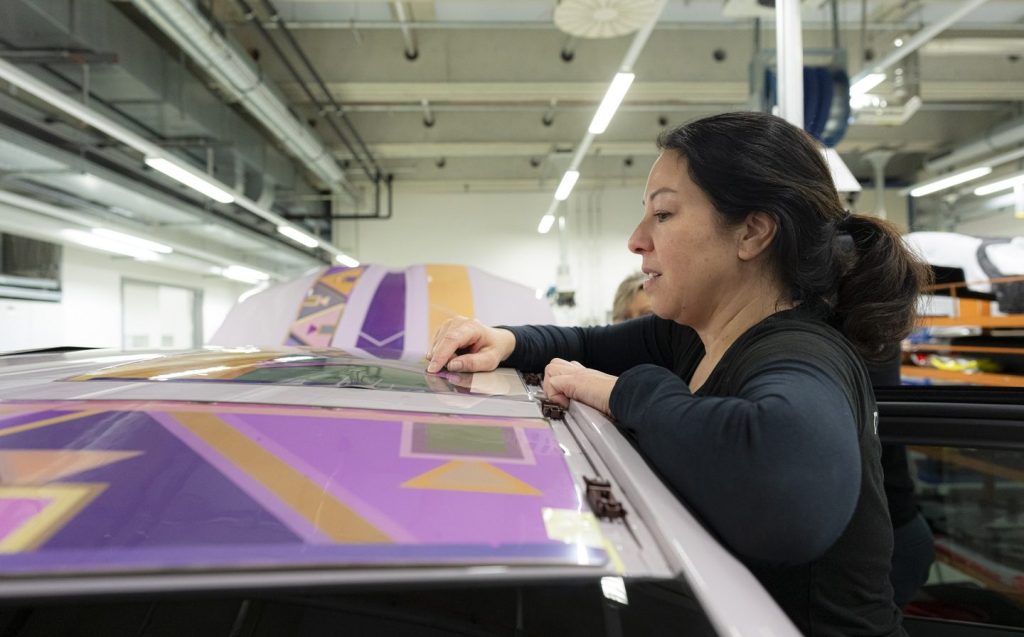
The geometric patterns and bold primary colours can be switched and changed on the car’s surfaces, offering a selection of different designs and the ability to flip between various options automatically.
“It is fascinating to me to see how modern technology can expand my art and make it accessible to a completely new audience,” said Mahlangu.
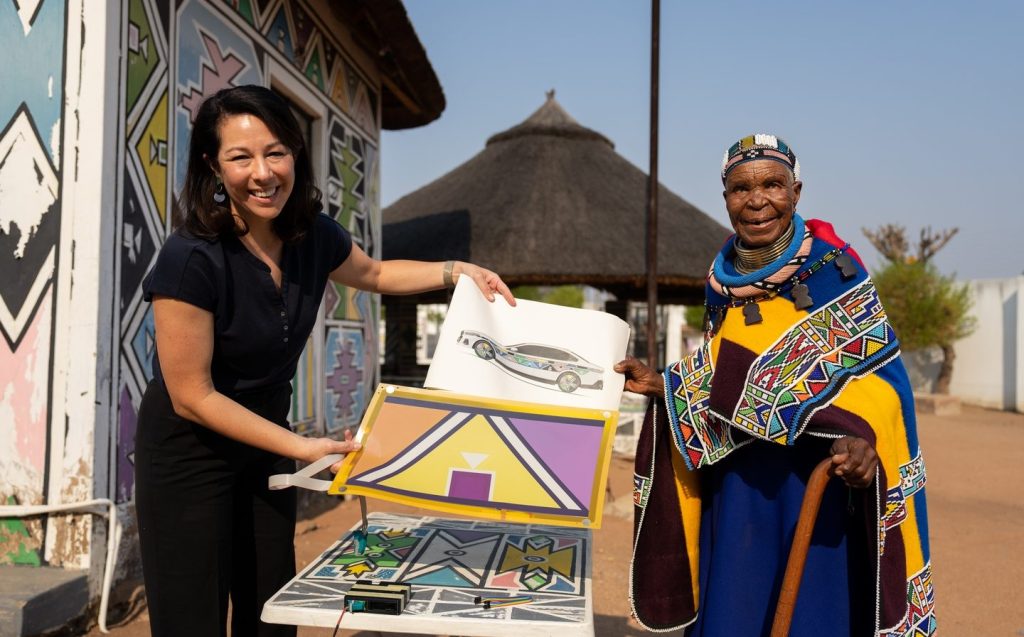
The design and animations are accompanied by a sound composed by Renzo Vitale, BMW Group’s creative director for sound. To merge the South African Ndebele art with the BMW brand, Vitale used sequences from Mahlangu’s voice, as well as the sound of her feather brushes, in the recording. These were combined with sounds from pencils used in the BMW design studio and the acoustic feedback of the i5’s touchscreen.
The car went on show last week (February 29) at the Frieze Los Angeles art fair, continuing BMW’s long-standing cooperation with the event. At the same time, Mahlangu’s 1991 art car is on display in South Africa for the first time in more than 30 years.
New form of personalisation for the future?
BMW’s Flow technology is not yet available on commercially available products, but it suggests a new future for personalisation in the market.
Should it come to market in the UK, it could offer customers the chance to change the colour of their car as the mood takes them, or to add patterns that could be changed or even made more or less visible at the touch of a button.
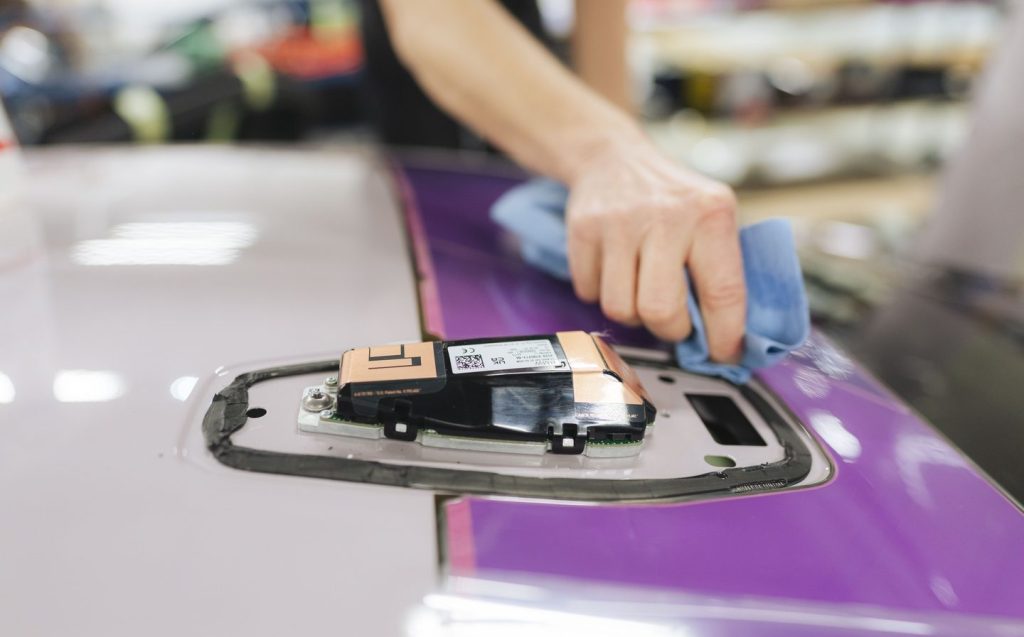
It’s a technology other carmakers have looked at — in 2013, McLaren’s then-head of design Frank Stephenson alerted us to the possibilities of colour-changing cars. However, before such technology comes to market, it will have to be extensively tested to deal with all manner of road conditions, temperatures and durability criteria, as well as being competitively priced and profitable.
The materials and colour chief of another major car manufacturer told Driving.co.uk that it too had looked at coulour-changing bodywork but costs would need to be brought down, and potential issues with insurance and registration details would need to be ironed out, before a colour-changing car could be made road-legal.
Nevertheless, it could be an exciting option for those who like their vehicles to be more personalised, and would prefer to have the option to drive a car of a different colour depending on their mood or occasion. A black car for a funeral, perhaps, or a brighter colour during the dark winter months.
At present, brightly coloured cars are often less valuable on the used market, but technology such as BMW Flow could allow customers to simply switch the car’s colour as they might with ambient lighting or touchscreen backgrounds.
For the time being, however, BMW has not announced any plans to bring the technology to market, and it remains a technical showpiece for concept cars and other one-offs.
A history of art cars at BMW
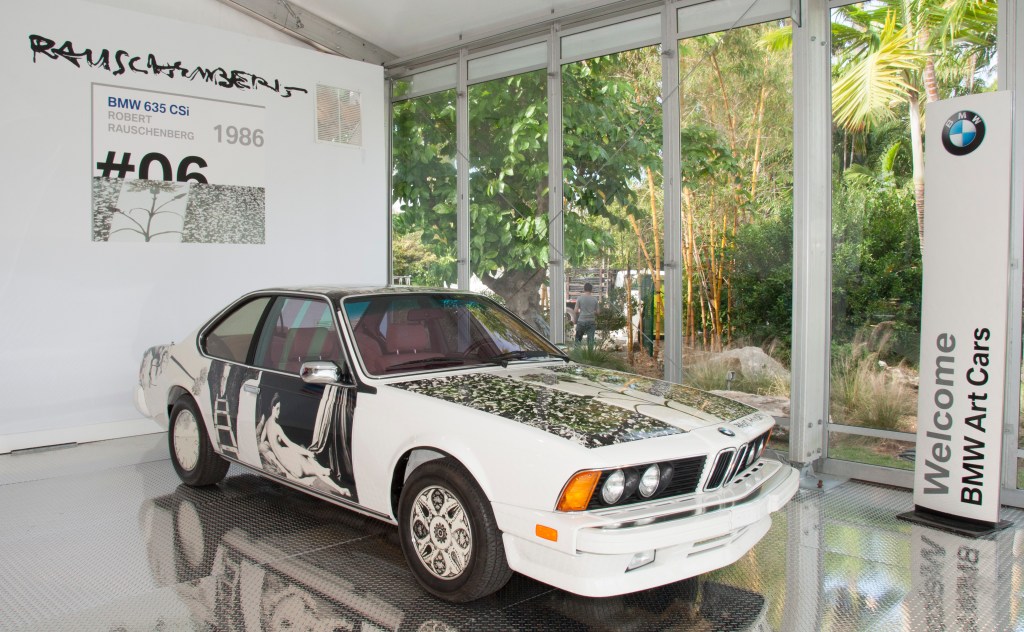
BMW has a long history of art cars, having started out in 1975 with the one-off Alexander Calder BMW 3.0 CSL that raced at Le Mans.
Since then, the company has created numerous special art cars, including Mahlangu’s 1991 525i and other famous creations such as the Andy Warhol Z1 of 1979 or the David Hockney 850 CSi from 1995.
The latest was revealed earlier this year, when Julie Mehretu designed a livery for the BMW M Hybrid V8 race car.
Related articles
- If you were interested in the new BMW i5 art car, you might want to read our review of the BMW i5
- You might also like to read our review of the BMW M3 Touring
- Or, check out the best luxury cars to buy
Latest articles
- Aston Martin Valkyrie AMR-LMH hypercar hits track ahead of 2025 Le Mans challenge
- Porsche has begun testing the electric Cayenne
- Cupra Leon 272 eHybrid 2024 review: Bigger battery, better tech … but is it a Cupra?
- Porsche 911 GTS 2024 review: Hybrid heresy or more Stuttgart genius?
- Extended test: 2023 Vauxhall Astra Sports Tourer GS PHEV
- Ford Capri revival has faced a lot of flak… but are buyers put off? Here’s what visitors to the Festival of Speed had to say
- F1 2024 calendar and race reports: What time the next grand prix starts and what happened in the previous rounds
- ‘No timeframe’ for how long Volvo’s returning estate cars will be on sale in UK
- Kia Picanto 2024 review: Updates add spice to cute Korean city car


